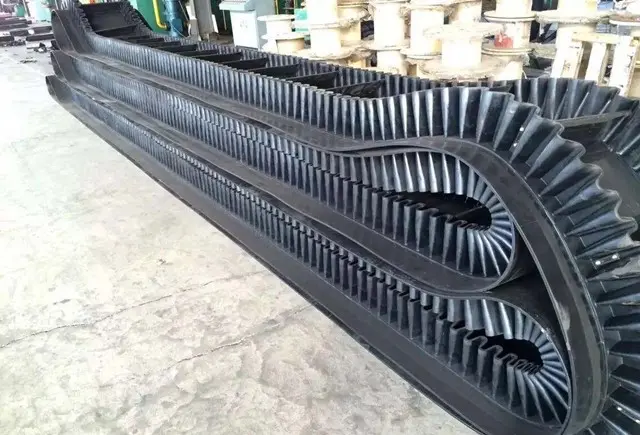
Image Source: Google
Sidewall conveyor belts are a versatile and efficient solution for transporting bulk materials in a vertical or inclined manner. They are widely used in various industries such as mining, agriculture, construction, and recycling. In this ultimate guide, we will explore everything you need to know about sidewall conveyor belts, including their construction, applications, advantages, and maintenance.
Sidewall conveyor belts are made up of three main components: the base belt, the sidewall, and the cleats. The base belt is typically made of rubber or fabric, and it provides the foundation for the sidewall and cleats. The sidewall is the vertical part of the belt that prevents materials from falling off the sides. It is made of a flexible rubber compound that allows the belt to conform to the shape of the material being transported.
One of the key advantages of reliable sidewall conveyor belts is their ability to transport materials in an inclined position. This is particularly useful in applications where space is limited, or when the material needs to be elevated to a higher level. Sidewall belts can handle steep inclines of up to 90 degrees, allowing for efficient and space-saving material handling.
There are several applications where sidewall conveyor belts can be used. In the mining industry, sidewall belts are commonly used for transporting coal, ore, and other minerals. In the agricultural sector, they are used for handling grain, fertilizers, and other bulk materials. In the construction industry, sidewall belts are used in concrete plants, asphalt mixing plants, and other applications where materials need to be transported vertically.
One of the main advantages of sidewall conveyor belts is their ability to convey materials over long distances. This is due to the high tensile strength of the base belt and the sidewall, which allows for larger belt widths and longer conveyor lengths. Additionally, the cleats provide extra support and prevent the material from slipping back down the incline.
It is also important to ensure that the sidewall conveyor belt is properly tensioned. Over- or under-tensioning can lead to premature belt failure and reduced performance. The belt tension should be adjusted according to the manufacturer's recommendations and checked regularly to ensure it is within the desired range.
In conclusion, sidewall conveyor belts are a reliable and efficient solution for transporting bulk materials in a vertical or inclined manner. They are widely used in various industries and offer several advantages such as the ability to handle steep inclines and convey materials over long distances. By properly maintaining and tensioning the belts, their performance and longevity can be maximized. Whether you are in the mining, agriculture, construction, or recycling industry, sidewall conveyor belts can help optimize your material handling processes.
+ There are no comments
Add yours